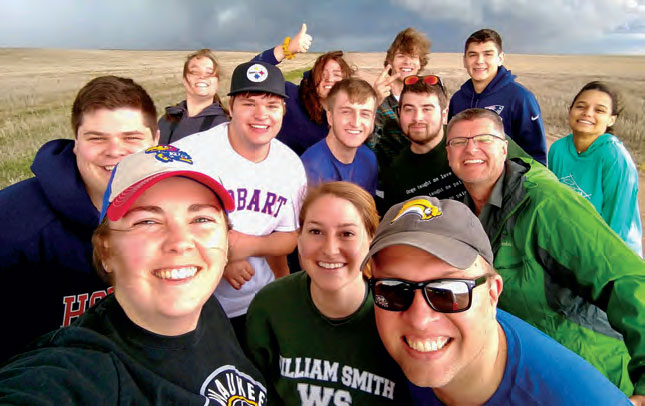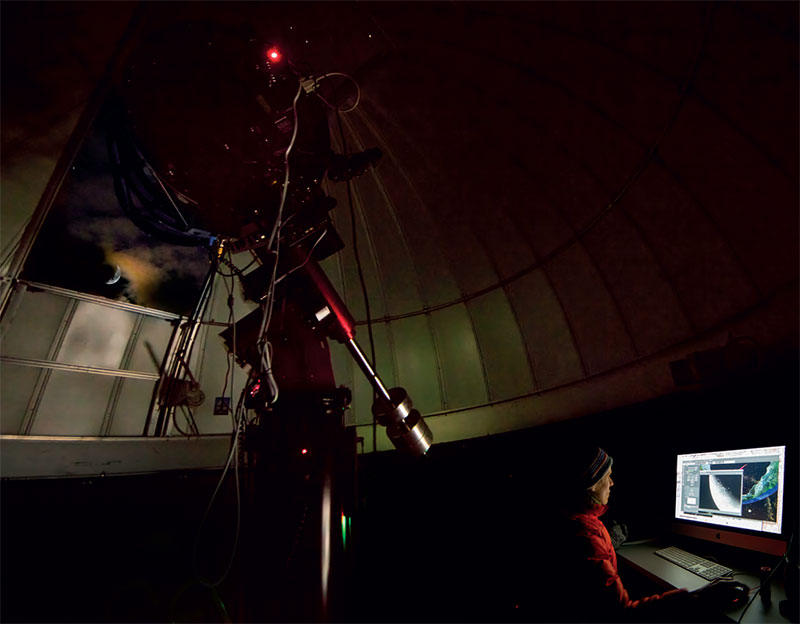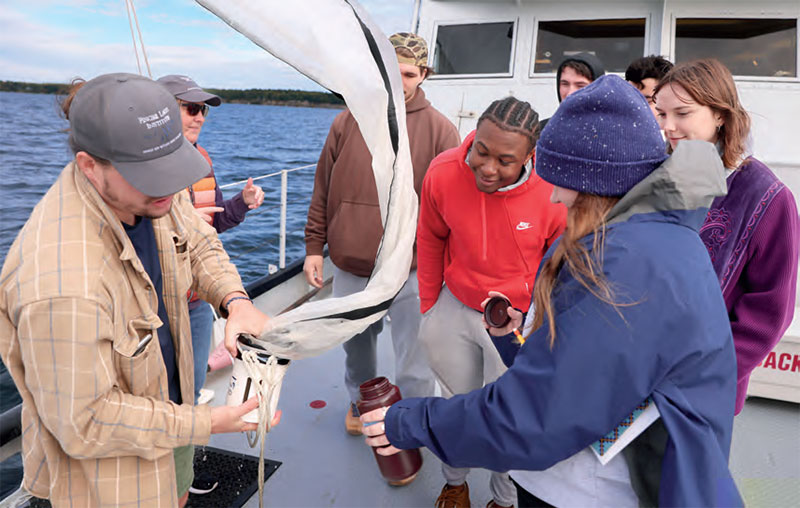The Pulteney StreetSurvey
UP CLOSE AND PERSONAL: NEW PERSPECTIVES ON STEM
In the elements.

Professors Neil Laird and Nick Metz and students stop for a selfie during a summer geoscience field course focused on forecasting and observing severe storms. With student researchers, Laird and Metz study severe weather across the country, from tornados in the Great Plains to the winds on Mt. Washington to lake-effect snow in Western New York (an ongoing project funded by the National Science Foundation). Metz, now associate provost, says that faculty research grants fuel teaching and amplify the ways that “the engagement of our faculty can support our students” throughout the academic year and during the summer, both in the classroom and in the field.
Across the universe.

Associate Professor of Physics Leslie Hebb captures the face of the crescent moon with the telescope in the Richard S. Perkin Observatory near the Houghton House arts campus. Hebb was recently awarded a grant from the National Science Foundation to study magnetic activity on low mass stars using data from NASA’s Kepler satellite. With colleagues and student collaborators, she is searching for planets around bright stars using an optical device called an Engineered Diffuser, which minimizes “sources of uncertainty in the light output of the star, especially the effect known as scintillation” — what most people think of as twinkling. As recently published research indicates, Hebb’s observations and analysis have helped confirm the existence of several extrasolar planets.
Mentorship. Collaboration. Meaning.

Professor of Chemistry Justin Miller meets with Jonah Silverman ’23, Haley Sax ’23, Madison Stewart ’23 and Rielly Harrison ’23. As part of Miller’s research group, they are searching for pathways toward new anticancer drugs and synthesizing candidate compounds to test in cell biology courses taught by Professor of Biology Sigrid Carle ’84. Miller, who is also the faculty advisor to the Health Professions program, notes that the most meaningful science education is holistic, combining classroom learning, advising and research with a clear sense of how it all fits together. “An educator needs to connect with students, to understand them as people and to appreciate their thought processes,” Miller says. Given the different ways students learn and the range of reasons they enroll in a given course, “the challenge facing a professor is to make the subject relevant, interesting, and approachable for every student, so that each is able to answer the question, ‘What have I learned, and why is it worthwhile?’”
Space and place.

Students delve into data aboard the William Scandling. Under the direction of Associate Professor of Environmental Studies Kristen Brubaker and Finger Lakes Institute Lab Manager Trevor Massey, they explore Seneca Lake and its ecosystems, using limnological tools and equipment to compare the physical, chemical and biological properties of the lake at different depths and locations.
